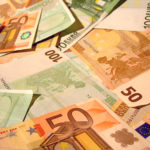The euro managed to gain further ground against the US dollar on Tuesday, but upward movement was likely to remained limited, because of expectations of US Federal Reserve Bank to reduce the scale of bond purchases soon.
EUR/USD cross touched 1.2897 at 6:54 GMT, the pairs highest point for todays trade, after which consolidation followed at 1.2878. Support was expected at July 8th low, 1.2810, while resistance was to be encountered at July 5th high, 1.2916.
US dollars trend upwards seemed likely to continue, following the strong employment data from the United States on July 5th, which showed that economy added 195 000 job positions in June, surpassing the initially estimated 165 000. In June FED Chairman Ben Bernanke said that the central bank intended to scale back its easing program by the end of 2013, if US economic conditions were to meet FED’s objectives. In addition, Foreign Open Market Committee (FOMC) meeting protocol, that could provide more guidance on future policy, was expected on Wednesday.
Meanwhile, European Union finance ministers meet in Brussels for a second day on Tuesday, a day after agreeing to release 3 billion EUR of aid for Greece, in order to avoid a new debt crisis at least until German elections this autumn. Greece will receive 2.5 billion EUR this month and the remaining part in October, only if Greek Prime Minister Antonis Samaras was to stick tightly to reforms and austerity measures.
The euro was supported due to returning risk appetites and despite the accelerating consumer price inflation in China in June. As a result of gaining euro the dollar index, which tracks the performance of the greenback against a basket of six other major currencies, pulled back from three-year highs, standing at 84.38 at 8:29 GMT, down by 0.08% for the day.
The euro has added 4.6% this year, the second-best performing currency among 10 developed-nation currencies, tracked by Bloomberg Correlation-Weighted Indexes. US dollar has increased by 7.3%, while the Japanese yen was the worst performer, registering a decrease by 9.6%, according to Bloomberg.
Elsewhere, the euro inched up against the British pound, as EUR/GBP pair added 0.05% to reach 0.8610. Ultimately, the common currency was higher against the Japanese yen, with EUR/JPY cross increasing by 0.40% to 130.45.





